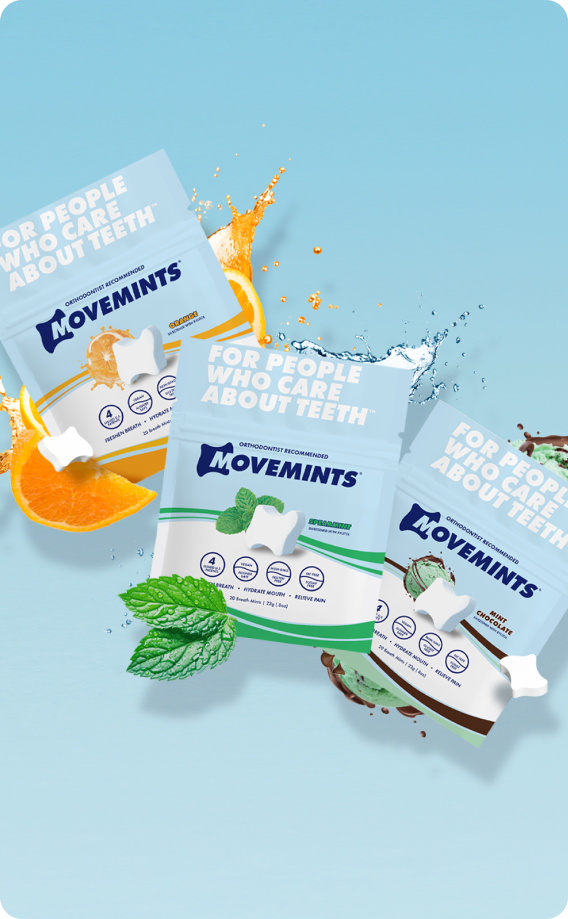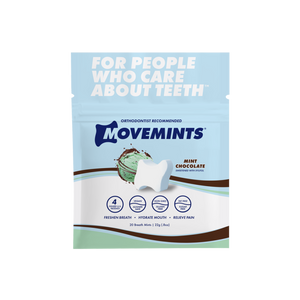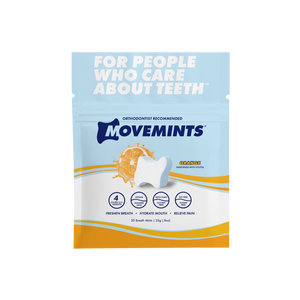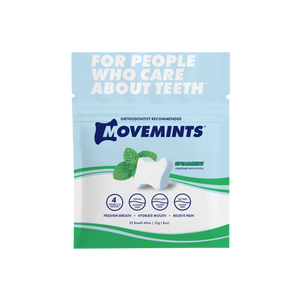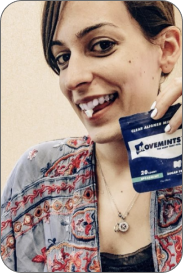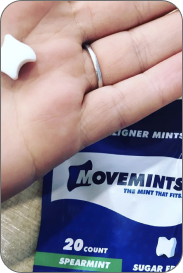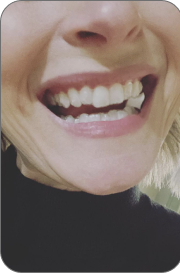These are challenging times, and they will be with us for the foreseeable future. After you take care of the immediate needs of you and those around you, you may move on to other questions like how to maintain your Invisalign treatment when you aren’t able to see your orthodontist or provider.
We understand the time and resources you devote to straightening teeth with clear aligners, and appreciate that the current circumstances will require adjustment to your old routine. This blog has sourced recommendations from orthodontic professionals to help patients stay on track with their treatment while lowering personal health risks during the coronavirus outbreak.
Questions You May Have About Treatment
Of course, not everyone will be at the same point in their treatment, and with so many different products and services out there, no treatment plan looks the same. While we cannot possibly have inferred all the various questions readers might have, here are 5 common scenarios you might have to navigate:
- You still have some trays, but can’t be seen for a check up to get more, or to make sure you are “tracking”.
- You are on your last tray, but can’t be seen for a refinement or to finish your treatment.
- Your current/last aligner is lost, broken or otherwise missing.
- You do have your entire set of trays, but are worried about what to do to stay on track.
- Practicing maximum hygiene to keep yourself safe.
Let’s go through each one.
Your Clear Aligners Are Current But You Can't Go In For a Checkup
If you have your current set of aligners but don’t know when you’ll receive more, you have a few options. First, try to communicate with your provider to see if they offer any virtual treatment options. It is possible that with the advancements in telehealth, they could be able provide you with a virtual consultation or check-up, monitor your progress, and potentially mail your next set of aligners directly to your home.

Some offices are offering “patient pick up” times so they can collect additional aligners from the office, while others are even providing local delivery service. By now, you probably have a good idea of what your own provider is doing, but if you don’t -- pick up the phone and give them a call!
If for some reason you don’t have the ability to leverage these virtual options, the next best course of action might be to draw out the life and functionality of the aligners that are in your possession. For example: if you have 3 or 4 more trays on hand (beyond the ones you are currently wearing), you could wear each aligner for an additional week in order to buy some time until an in-person visit becomes possible.
Another option is to wear each tray as prescribed full time for the first week, and then switch to wearing it half the time (12hrs/day) for the 2nd week. As always, and most importantly, it’s imperative to check in with your provider before altering your dental plan. Never stop wearing your aligners without consulting your provider.
It's Your Last Set of Aligners And You Have Questions About Refinements
Get ready to hunker down in preservation mode. If you’re on your last set, but not officially finished with treatment (for instance, if you’re waiting on refinements), the providers we have consulted all agree the best option is to reduce the number of hours you wear your last tray to 10-12 hrs per day. The idea here is to assist in extending the life of that final tray, and it is very important.
When faced with wearing something disposable beyond its suggested “shelf life”, cleanliness requires some extra diligence. Aligner cleaning solutions are always a necessity, but especially when having to wear your trays for longer than a few weeks. We will discuss sanitization a little later in this post, but you’ll also want to keep your trays clean and fresh by soaking them or using a special formula for orthodontic appliances like Smile Saver Spray from Soluria.
Even if you keep your trays soaking in cleaner when they aren’t in use, and practice all the hygiene tips, there’s a good chance that the longer you wear them, the grimier they’ll become. If “grimy” is the most polite word you can think of to describe that last set, it might be time to give your provider a call to see if they’re willing to order you a replacement. Keep in mind, a replacement set is just going to be an exact copy of what you currently have. Hopefully, your provider can get it shipped to their office, or your home, within a week or less! While there might be a charge to get a replacement, it’s probably nominal when compared to what you might otherwise pay if you completely lose track of your progress.
If you are on your final aligner (no refinements or corrections, absolutely final), then the importance of maintaining your gains is critical. If you have attachments on your teeth, it’s unlikely you will be able to see your provider in order to remove them. Under no circumstances should you attempt to remove these yourself, without oversight from a dental professional. Instead, we recommend you request a replacement set of trays while you wait to get any attachments removed and your final retainers made.
If you have no attachments, it may be possible for your provider to order you a final retainer from your last treatment scan. A retainer is typically 30% stronger than an aligner, and therefore, built to last. Be sure to explore all of your retainer options with your provider.
Read More: Choosing the Best Retainer After Invisalign Treatment
Your current/last aligner is lost, broken or otherwise missing
This happens, and hopefully it doesn’t happen to you during the pandemic. But if it does, your best possible option may be to skip ahead to the next set of trays in your treatment (assuming you have those trays; many at-home providers and now traditional orthodontists are providing entire treatment cycles to their patients at once).
If you have worn the missing or damaged tray in question for at least a few days, you might be able to skip ahead—that is, if you have more aligners on hand. If you attempt this (after consulting with your provider, as appropriate), be sure to wear that new aligner stage for an extended period of time to make up for the previous stage. The providers we consulted suggested 2 full weeks in a “jump-ahead” stage is sufficient.
They also recommended multiple, daily chewing exercises to make sure the aligners are being activated onto the teeth, focusing on the front teeth. But again, this is so you know your options when discussing this back-up plan with your provider. Don’t make these choices on your own! In some cases, your provider may even be able to order a replacement for your lost tray, so that you can get back on track as quickly as possible. If this isn’t an option, and you do not have any aligners to “jump-ahead” to, the best course of action in the short term is to go back to the previous aligner (i.e. wear #9 if you have lost #10). Even though you are technically “backtracking”, you will still be in control, and any losses of progress will be minimal.

If you haven’t been keeping previously worn aligners, and you can’t get any replacements from your provider, the best course of action will be to get a boil-and-bite mouthguard. These are plenty sufficient to hold your teeth in their new alignment, for the time being. If possible, look for the least bulky option to maximize comfort. You will be able to trim it a bit, which you should do as much as possible, but leave as much of the area that touches the tooth surfaces intact. For DIY buffs with a dremel tool on hand, this job will be very quick indeed!
This will certainly not be a great look, wearing a large mouthguard all day, but try to log as many hours as possible. And definitely wear it all night to maintain your current progress.
You do have your entire set of trays, but are worried about what to do to stay on track
This scenario most likely applies to at-home aligner patients, as companies like these are now shipping your complete series of trays in one convenient box. Without easy access to your provider point of contact, you may have concerns about complying with your plan. As you probably know, the most important aspect of your treatment is called “tracking”. Tracking refers to how your teeth are moving compared to the computer simulation. It is evaluated by how perfectly your aligners are fitting onto your teeth.
Read More: Why Are My Teeth Not Tracking With My Invisalign Plan?
If there are no gaps between your aligners and the edges of your teeth, then your tracking is great! The most common teeth that “lose” track, or slip away from the edge of the aligner, are the upper lateral incisors - the smaller teeth immediately next to your two front teeth. In order to be extra careful that you are “tracking”, the orthodontists we consulted suggest wearing each stage for an extra day or two. Sometimes it is hard to gauge tracking 100%, so they recommend doing this even if you think things are fitting well. Adding a few days to each stage is nothing compared to needing a refinement because of lost tracking! It won’t even add up to the amount of time you will wait for your new refinement aligners to be manufactured.
Hygiene Tips for Wearing Clear Aligners During Coronavirus
First, we have to emphasize that deodorizing your trays is great, but the focus needs to be on sanitization. Using toothpaste is a great way to freshen up your aligners, but it is not effective sanitizer. If you have a round bottle brush (like this one), use lukewarm water and dish soap to gently scrub away grime, and sanitize your aligners daily. If you’re feeling under the weather, make sure to do this every time you place your aligners back into your mouth. Keep one bottle brush dedicated for your aligners so that you know it is clean!

Additionally, you can also soak your trays in mouthwash or something similar. Make sure that whichever brand you’re using CONTAINS alcohol, or else it won’t kill any germs. The alcohol in the mouthwash makes it an antiseptic mouthwash - the kind that stops the growth of microorganisms.
Don’t forget to take the same level of care with your retainer case! When you take your aligners out, it is best to rinse them thoroughly with plenty of cold water before you put them back in the case for safe keeping. No matter how diligent you are with this, it’s likely that germs from your mouth are still being transferred into your case. In times of pandemic, it is a best practice to disinfect your retainer case on the daily. Again - dish soap and warm water is all you need to do this, but other household cleaners will also do the trick, so long as they are “food surface safe”.
Clean your chewies regularly! We’ve discussed in previous blog posts how we feel about the unsanitary nature of re-usable chewies. If you are using them, make sure you are cleaning them. Stainless steel straw brushes are great for getting inside that germ-ridden hollow part of the tube!
And it goes without saying, but since you’re wearing removable retainers, you’ll need to be extra vigilant about washing your hands. Rather than popping them out with your fingers, use a hands-free tool like OrthoKey to minimize the amount of hand to mouth contact. And then once they come out, they either go into the cleaning protocol or into a sanitized retainer case. No exceptions.
Additional Advice About Wearing Clear Aligners During A Pandemic
What if your attachment breaks? Keep in mind that the attachments (tooth colored bumps on your teeth) are there for the plastic to push against in order to more effectively move your teeth. If you are currently stuck at home and an attachment falls off, don’t worry. While it is important to inform your provider that one of your attachments has broken, it will not hurt your teeth or regress your treatment if you continue to wear your trays as prescribed until your next visit. A broken attachment is no reason to not wear your trays!
What if your aligner has a crack or a small tear? If you are in the middle of your treatment and have more aligners on hand, a small crack or tear in your current aligner shouldn’t be a huge deal. The best way to handle a crack or tear is to make the aligner last as long as you can. Handle the tray with care whenever you’re inserting or removing it. Be gentle when cleaning it. And take it easy on the chewing exercises.
If this is your final aligner (and only if the tear or crack in your aligner is small and the tray still fits properly on your teeth), continue to wear the tray nightly until you are able to be seen, or are able to get a replacement from your provider. A simple way to prevent the new tear from irritating your mouth, is by using a nail file to smooth any sharp edges. Dental wax may also be useful - but apply it with clean hands only!
Be extra careful when taking a damaged aligner out of your mouth so as not to create any more damage. Our providers recommend using multiple points of contact (i.e. two fingers on each side of the tray) to minimize any flexing of the plastic when removing it.
Remember, always contact your provider or specialist before you do anything else. Just like you, they’re working from home, and will still be around to answer any questions and concerns you may have. And just because the world is on hold right now doesn’t mean your alignment plan is, too. You’ve been working too hard and for too long to let things slip now, and eventually when things get back to some semblance of normal, your brand new smile will brighten everyone’s day!




